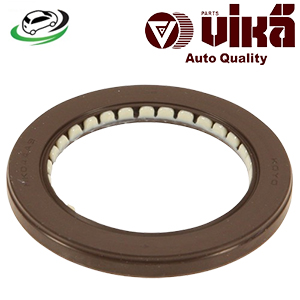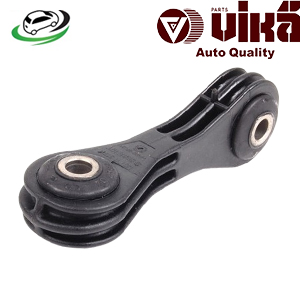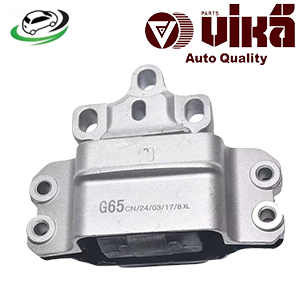-12%
Get Left Transmission Mount VW GTI 2.0L/Jetta 2.0L/Jetta 2.5L/Jetta GLI 2.0L/SportWagen 2.0L/Rabbit 2.5L 1K0199555R
The transmission mount is a critical component in a vehicle’s drivetrain system. It secures the transmission to the chassis, isolating vibrations, reducing noise, and ensuring proper alignment with the engine. Understanding the functionality, types, symptoms of failure, and maintenance of transmission mounts is crucial for vehicle owners and automotive technicians.
Functionality of the Transmission Mount
Transmission mounts serve several important functions:
- Secure the Transmission: The primary role of the transmission mount is to securely attach the transmission to the vehicle’s chassis, preventing excessive movement.
- Vibration Isolation: The mount absorbs and dampens vibrations from the transmission, preventing them from being transmitted to the chassis and the passenger cabin.
- Noise Reduction: By isolating vibrations, the mount also helps reduce noise, ensuring a quieter and more comfortable ride.
- Alignment Maintenance: The mount maintains the proper alignment between the transmission and the engine, ensuring efficient power transfer and smooth operation.
Components of a Transmission Mount
A typical transmission mount consists of the following components:
- Mount Bracket: The metal bracket that attaches the transmission to the chassis.
- Rubber or Polyurethane Insert: The insert absorbs vibrations and provides flexibility. Rubber is commonly used for its excellent damping properties, while polyurethane is used in performance applications for its durability.
- Fasteners: Bolts and nuts secure the mount to the transmission and the chassis.
Types of Transmission Mounts
Transmission mounts come in various types, each suited to different vehicle requirements:
- Standard Rubber Mounts: These are the most common type, providing good vibration isolation and noise reduction. They are typically used in everyday passenger vehicles.
- Hydraulic Mounts: These mounts use hydraulic fluid to dampen vibrations and provide better performance in terms of noise reduction and vibration isolation. They are often used in luxury and high-performance vehicles.
- Polyurethane Mounts: Known for their durability and resistance to wear, polyurethane mounts are often used in performance and off-road vehicles. They offer better handling characteristics but may transmit more vibrations to the chassis.
- Solid Mounts: These mounts have no damping material and are used in racing applications where maximum rigidity and power transfer are required. They offer no vibration isolation, making them unsuitable for regular street use.
Symptoms of a Failing Transmission Mount
Recognizing the signs of a failing transmission mount is essential for maintaining vehicle performance and safety:
- Excessive Vibrations: Increased vibrations felt in the cabin, especially during acceleration, can indicate a worn or damaged transmission mount.
- Unusual Noises: Clunking, banging, or thumping noises when shifting gears or during acceleration and deceleration can be a sign of a failing mount.
- Misaligned Transmission: If the transmission appears misaligned or the vehicle exhibits poor handling, it may be due to a faulty transmission mount.
- Visible Damage: Cracks, tears, or deformation of the rubber or polyurethane insert can indicate that the mount needs replacement.
Causes of Transmission Mount Failure
Several factors can contribute to the failure of transmission mounts:
- Wear and Tear: Over time, the rubber or polyurethane insert can deteriorate due to constant exposure to heat, oil, and other environmental factors.
- Improper Installation: Incorrect installation can lead to uneven stress distribution and premature failure of the mount.
- Driving Conditions: Harsh driving conditions, such as off-roading or aggressive driving, can put additional stress on the transmission mounts, leading to accelerated wear.
- Fluid Leaks: Leaks from the engine or transmission can degrade the rubber insert, causing it to weaken and fail.
Maintenance and Replacement
Proper maintenance of transmission mounts involves regular inspections and timely replacements to ensure optimal performance and safety:
- Regular Inspections: Periodically check the transmission mounts for signs of wear, damage, or fluid leaks. This can be done during routine vehicle maintenance or when other transmission-related issues are being addressed.
- Monitor Symptoms: Pay attention to any unusual noises, vibrations, or handling issues that may indicate a problem with the transmission mounts.
- Replace as Needed: If any symptoms of a failing transmission mount are observed, replace the mount promptly to prevent further damage to the transmission and other drivetrain components.
Replacement Process
Replacing a transmission mount typically involves the following steps:
- Prepare the Vehicle: Park the vehicle on a level surface and lift it securely using a jack and jack stands. Ensure the transmission is properly supported.
- Locate the Mount: Identify the location of the transmission mount. In most vehicles, it is located underneath the transmission.
- Remove the Old Mount: Remove any components obstructing access to the mount, then unbolt the mount from the transmission and chassis.
- Install the New Mount: Position the new mount and secure it to the transmission and chassis using the appropriate fasteners. Ensure it is properly aligned.
- Reassemble Components: Reinstall any components that were removed to access the mount.
- Lower the Vehicle: Carefully lower the vehicle and remove the jack stands.
- Test the Vehicle: Start the vehicle and take it for a test drive to ensure the transmission operates smoothly and there are no unusual noises or vibrations.
Importance of Quality Mounts
Using high-quality transmission mounts is essential for several reasons:
- Performance: Quality mounts ensure effective vibration isolation and noise reduction, contributing to a smoother and more comfortable ride.
- Durability: High-quality materials and construction enhance the mount’s longevity, reducing the frequency of replacements.
- Reliability: Reliable mounts maintain proper alignment of the transmission, ensuring efficient power transfer and smooth operation.
- Cost-Effectiveness: Investing in quality mounts can prevent frequent replacements and associated labor costs.
Follow us on Facebook for more parts.



